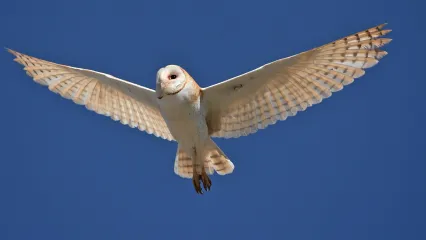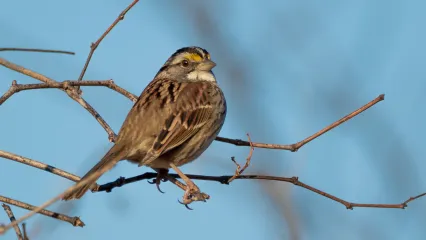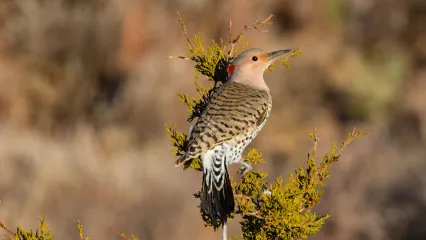
Description
A common visitor to Oklahoma's wetlands, the American avocet is a striking bird with the ability to issue a series of call notes in response to predators that gradually changes pitch to simulate the Doppler effect and make its approach seem faster than it actually is. And while you may have the privilege of hearing the approach of the American avocet at a wetland in Oklahoma, its striking appearance may be easier for beginners to use as an identifier. And for experienced birders, the avocet's unique bill and elegant movements still catch the eye.
Avocets feed on various invertebrates found in shallow mudflats. While crustaceans are preferred, they also feed on insects, larvae, and some seeds. The most common method of feeding involves dipping the bill just below the water surface, swinging the head from side to side. Birds filter water through their bill, catching prey using the sense of touch. In addition to this filter-feeding method, avocets also find food visually; picking food items off the top of the water and even catching insects in mid- air.
In March, the head and neck of both males and females begins to turn a rusty red-orange in preparation for the breeding season. Birds begin to arrive on the breeding grounds in early April, with some birds returning to the same area they were born. Exclusive pair bonds form shortly after arrival and avocets perform several behavioral displays before and after mating. One of the most recognized occurs after a pair mates; the male and female cross bills and run a short distance together. In some cases, the male even drapes a wing over the female during this extraordinary courtship ritual.
After molting in September, the head coloration changes back to a pale blue that lasts through February. Shortly after this basic molt, avocets begin staging for winter migration. Birds that have spent summers in Oklahoma generally migrate to the Gulf Coast of Mexico and southern Florida.
Size
Large for shorebird standards, this eye-catching bird has light blue legs, a black and white body and an unmistakable thin, upturned bill. Eighteen inches in length, avocets have a 31-inch wingspan and weigh 10 to 12 ounces. Males and females are similar in size and coloration, but females have a shorter, more drastically curved bill. While this may seem like a small difference, it is a reliable trait used in the field.
Habitat
This remarkable bird can be seen in several wetland areas in western Oklahoma. Hackberry Flat Wildlife Management Area in Frederick, and the Great Salt Plains National Wildlife Refuge in Jet, offer viewing sites and even host birding festivals in late spring.
Life Cycle
Avocets begin nesting in April and early May. While these birds do not typically breed outside their pair bonds, they will nest in clusters or small colonies. The breeding pair chooses an area of bare ground near water and makes a scrape or small depression and three to four spotted eggs are laid in mid to late May. Although both parents incubate the eggs during the day, the female takes over at night. Nests are aggressively defended from both terrestrial (land) and aerial (flying) predators. In fact, avocets even imitate the Doppler effect by using a series of pitch changing calls; confusing the predator by making it think the avocet is approaching at a much faster rate. Incubation lasts 23 to 25 days and chicks leave the nest within 24 hours of hatching. The first flight occurs four to five weeks later.


